Hourly-cost maintenance programs
Bizjet engine OEMs offer multiple options to facilitate worry-free operations.
By Owen Davies
Contributing Writer
Amedium-scale fleet operator once reported to us that he found it cheaper not to buy whole-aircraft maintenance programs from the airframer.
Instead, he preferred to use separate maintenance programs for the airframe, engine, and avionics from the original equipment manufacturers (OEMs). It cost appreciably less to buy, say, an engine maintenance program from the engine maker. Others seem to have made the same discovery.
Ever since Rolls-Royce introduced its Power-by-the-Hour program in the early 1960s, engine makers have been building a market for hourly-cost maintenance programs (HCMPs).
Today, any company that builds jet engines offers comprehensive maintenance and overhaul programs for its products. They have become indispensable to aircraft operators who need to even out monthly expenses and avoid sticker shock for unscheduled maintenance or repair.
Let’s take a look at maintenance contracts offered by engine OEMs. They range widely, and no engine maker has only one deal to offer.
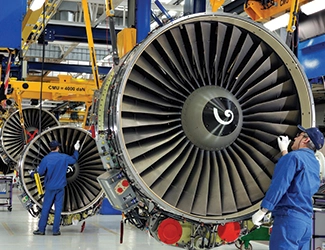
CFM International
None of the conventional executive jets use CFM engines, but the converted airliners at the extreme upper end of bizjet seating capacity do.
About 60% of Airbus A320neo models use the CFM56-B. Two-thirds of operators flying the A320neo choose the CFM LEAP-1A powerplant. It seems safe to assume that many bizjet owners are among them. Boeing Business Jets based on the 737 family use the CFM56-7B27 engine, while the BBJ MAX flies with the LEAP-1B.
CFM’s HCMPs are tailored for each customer. Terms, coverage, and payment options are all up for negotiation. Overhaul programs are negotiated as well. Operators can sign up for event-based services or whole-fleet coverage. Pricing options let the customer control material and workscope. To help control costs, sister company CFM Materials can provide used serviceable components as well.
CFM licenses a number of MROs to write maintenance contracts for them. Among them are ST Engineering Aerospace, based in Singapore but with facilities throughout the Asia-Pacific region, Europe, and the US; MTU Maintenance Zhuhai, based in Guangdong, China; and TAP Maintenance & Engineering, a unit of Portugal’s TAP Air Portugal that keeps the airline’s fleet flying and also accepts outside customers.
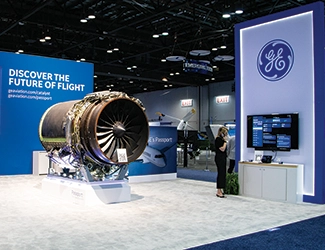
GE Aerospace
GE engines, found in the Bombardier Challenger 650, Global 7500, and Global 8500 business jets, are covered by either of 2 HCMPs. If you fly a BBJ or an Airbus airliner conversion, there is a good chance it too is powered by GE or CFM International engines. Maintenance programs are offered for them.
OnPoint Maintenance Service covers labor, materials, overhaul, repair, inspection, and testing of the entire propulsion system for both scheduled and unscheduled maintenance.
It includes removal, transportation, and reinstallation of loaner engines, nacelles, and line replaceable units (LRUs). Service bulletins (SBs) are a given.
OnPoint can save customers time and money. Those without it can twiddle their thumbs for up to 3 months before their planes enter an MRO shop for service. Turnaround time adds another 120 to 200 days to their wait. Aircraft covered by the OnPoint program get immediate attention.
The TrueChoice Flight Hour program is designed for ultimate flexibility. Almost everything about coverage can be customized to fit the customer’s needs. It can include scheduled and unscheduled maintenance, covering either parts only or parts and labor. At their ultimate, TrueChoice Flight hour contracts are close to a full engine warranty.

Honeywell
MSP Propulsion is Honeywell’s maintenance service plan for engines. The company makes so many aircraft parts that a host of other MSPs are available.
Hourly-cost plans are available for the HTF-series engines used in the Gulfstream G280 and the Bombardier Challenger 300/350, and the TFE731-20/40/50/60 turbofans that power Learjets, the Dassault Falcon 900LX, and the Cessna Citation III, VI, and VII. HTF7000 nacelle coverage is an option.
MSP Propulsion is available in 3 tiers. Even MSP Basic contracts cover parts and labor for scheduled and unscheduled maintenance; nearly all costs for major periodic inspections, compressor zone inspections, and hot section inspections (HSIs); replacement cost of cycle life-limited hardware; and foreign object debris (FOD) gap coverage.
For major periodic inspections, compressor zone inspection, and hot section period inspections, coverage includes labor, CAM consumables (other than oil, fuel, etc), component repair labor, other required parts, a troubleshooting labor allowance up to 10 hours, FOD gap coverage, and SBs.
Gold coverage adds routine inspection labor, a 20-hour troubleshooting allowance, engine and LRU removal and reinstallation or access time, AOG logistical support, and transportation of an unserviceable engine or LRU.
Gold NRL omits routine inspection labor for engines while retaining other coverage.
Coverage of APUs on new aircraft is free for 5 years if the propulsion engines are on MSP.
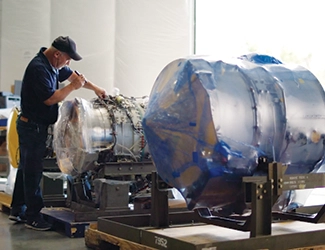
Jet Support Services, Inc
JSSI writes its own hourly-cost service contracts for jet, turboprop, and APU maintenance for both fixed-wing business aircraft and helicopters. If it powers a business aircraft, JSSI can handle it.
JSSI is not a conventional MRO. It maintains a global staff of more than 70 technical advisers and product line specialists, but farms out the actual work to maintenance organizations in the US, Europe, Asia, and Central and South America.
It knows the companies that do the wrenching and directs customers to the MRO it believes can best handle their individual needs.
Coverage includes parts and labor for scheduled and unscheduled shop visits, and for unscheduled replacement of limited-life components, as well as labor for engine removal and replacement, repair and replacement of engine accessories and LRUs, and routine borescopes. Engine corrosion repair is covered, along with parts and labor for routine inspections, service bulletins, and airworthiness directives (ADs).
Add to the list spectrometric oil analysis, the cost of rental engines, new engine warranty exclusions, and any FOD damage not covered by the manufacturer’s warranty. JSSI maintains its own engine lease pool and parts inventory. Through Avfuel, they even offer carbon offsets.
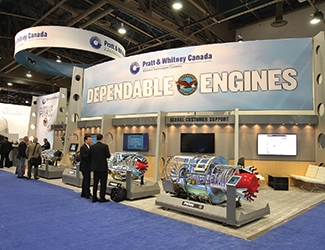
Pratt & Whitney Canada
Something over 1/3 of business jets (more than 8000) are moved by Pratt & Whitney Canada (P&WC) engines. They include the Cessna Citation Ascend and Latitude; Embraer’s Phenom 100EX and 300; the Dassault Falcon 2000LX, 6X, and 8X; and the Gulfstream G400, G500, and G600. Add about 6600 Beechcraft turboprop aircraft, and helicopters including the Leonardo AW109, the Airbus H135 and H175, the Bell 429, the MD Explorer, and the Sikorsky S-76D.
Operators of these and other business aircraft can choose among several levels of P&WC’s Eagle Service Plan (ESP). All packages cover engine overhaul or refurbishment, HSIs, basic unplanned engine removal, basic unplanned accessory removal, limited troubleshooting labor, SBs, help with lease engines, and trend monitoring of the engine’s condition.
ESP Gold adds coverage of troubleshooting labor, removal and installation, a mobile repair team for AOG incidents, and freight costs. ESP Gold Lite omits coverage of limited-life parts. It costs less, but operators can take a substantial hit at overhaul time.
In some regions, the Platinum package also covers routine periodic inspections and the repair of environmental damage. Additional services may be available, depending on the engine model.
For helicopters, Gold and Platinum coverage can be customized for the specific engine and helicopter model. For example, buyers of the Bell 427 and 429 can get Platinum coverage for the PW207 engines. Customers buying Bell 212 and 412 helicopters can opt for Gold or Gold Lite plans for their PT6T powerplants.
Environmentally conscious users of P&WC engines can buy carbon offsets as part of their coverage.

Rolls-Royce
This company’s Pearl engines power the Bombardier Global 5500 and 6500, the Dassault Falcon 10X, and the Gulfstream G700 and G800.
The R-R CorporateCare fixed-cost maintenance program covers scheduled and unscheduled shop visits, scheduled borescope inspections, engine line maintenance parts and labor, engine removal and installation, and access to lease engines.
About half of the engines the company covers have been moved up to CorporateCare Enhanced. It covers all that CorporateCare does, and adds engine line maintenance parts and labor, troubleshooting labor, engine removal and installation, and travel by a mobile repair team. Average time to resolve an AOG problem is under 24 hours.
CorporateCare Enhanced also covers nacelle and everything associated with it. That can be important. Repairing a thrust reverser unit can cost $200,000. It’s covered. So is the engine build up – starter, fuel systems, hydraulic systems, electrical systems, and all. Add also work on the inlet, apron, and cowl doors.
In announcing the program, Andy Robinson, then SVP services and customer support, commented, “Unless the damage is FOD-related, you should never get another bill. Even an oil change is covered.”
Engine operators pay a fixed price for engines in the air and nothing at all for engines in for repair or replacement. Limited price increases are governed by US economic data.
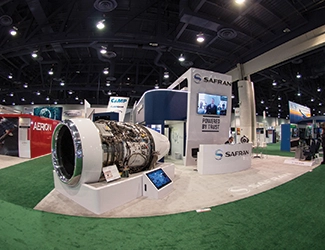
Safran
So far, Safran produces and maintains engines only for military aircraft. Its powerplants for civilian aircraft, manufactured with partners, are for airliner-size aircraft. Nonetheless, Safran offers one maintenance program crucial to many bizjets.
Safran’s 6 maintenance centers work on all CFM56 and LEAP engines found in many airliner conversions, and service the low- and high-pressure compressors in the GE90, the GP7000 built by Europe’s Engine Alliance for the Airbus A380. Safran’s maintenance network services more than 400 engines per year.
Yet its most important contribution to executive jets is the APUs it supplies for Dassault Falcon and other bizjet families, and a variety of helicopters. Its PowerCare maintenance programs for them cover parts and labor for scheduled maintenance, unscheduled removal and replacement of malfunctioning parts (even when out of warranty), and mandatory SBs. The SBH helicopter plans cover 50% of flight hours on APUs from Safran Power Units.
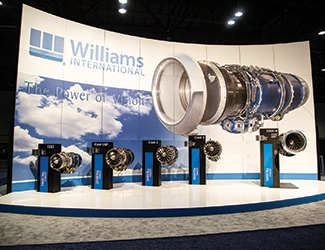
Williams International
Williams engines power most Cessna Citation models, the Pilatus PC-24, and the Cirrus SF50 Vision Jet. The company’s original HCMP, still available, is the Total Assurance Program (TAP).
It covers scheduled inspections; all major periodic inspections, parts, and labor; unscheduled maintenance and repair; routine maintenance, parts, and labor; replacement of life-limited components; wear-out items such as igniter plugs and start nozzles; mandatory SBs; troubleshooting; and shipping of parts and engines, including loaner engines (when needed). The program’s base price assumes 150 hours of operation.
TAP Blue, the company’s top-of-the-line program, adds coverage of FOD damage, corrosion at major periodic inspections, optional and recommended SBs, consumables such as bearing seals and gaskets, oil at the oil change, minimum-hour forgiveness, loaner engines, and optional expedited turnaround for services at Williams repair stations.
Williams must be doing something right. As of 2023 (See Pro Pilot, Nov 2024, p 36), Williams International has come out on top of our Powerplant Product Support Survey 8 years running.
TAP Blue adds to aircraft values. For a lesser program, Aircraft Bluebook subtracts from its valuation. For example, for a Cessna Citation CJ2 at 250 hours, the non-TAP Blue deduction is $88,280.
 Owen Davies is a veteran freelance writer specializing in technology. He has been a futurist at Forecasting International and TechCast Global.
Owen Davies is a veteran freelance writer specializing in technology. He has been a futurist at Forecasting International and TechCast Global.